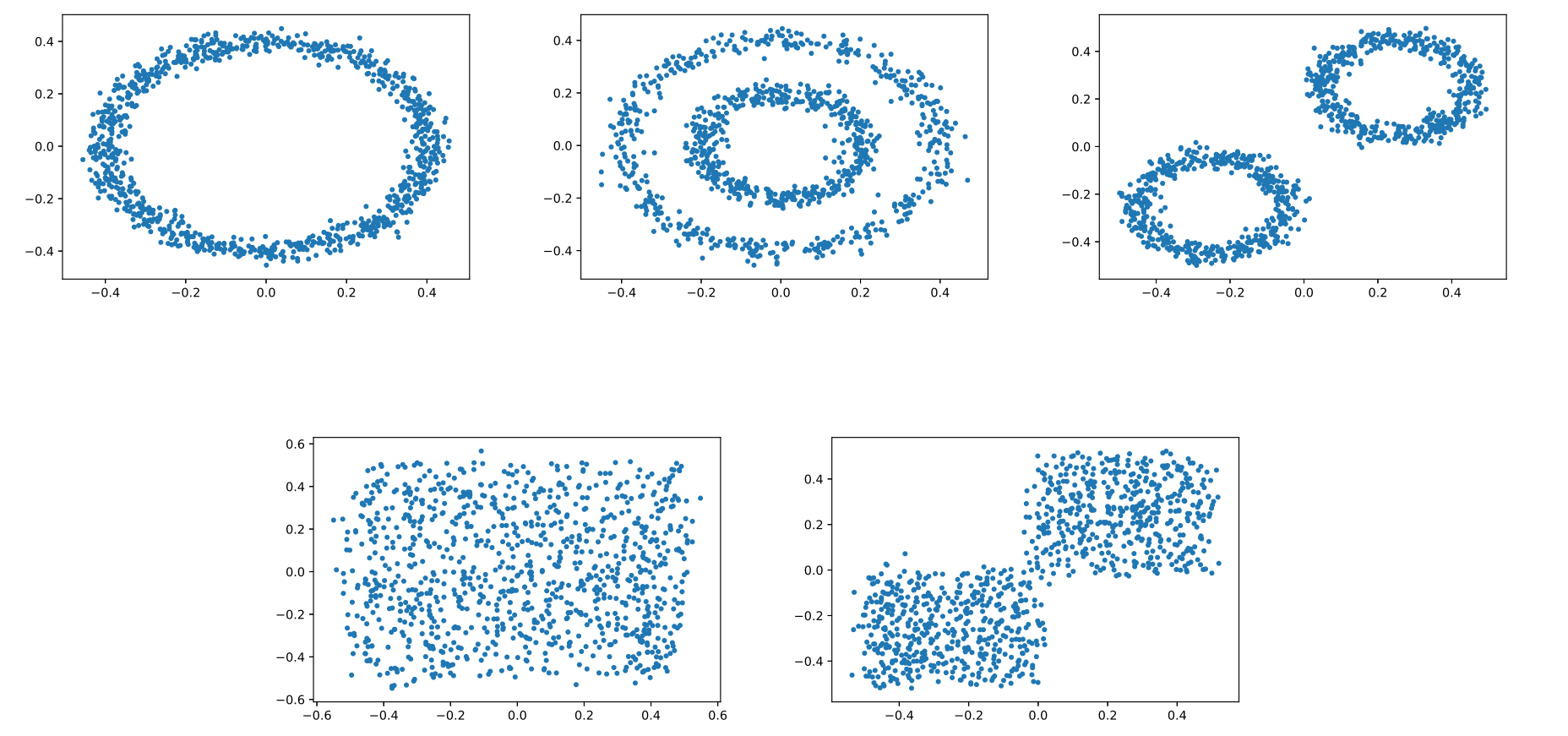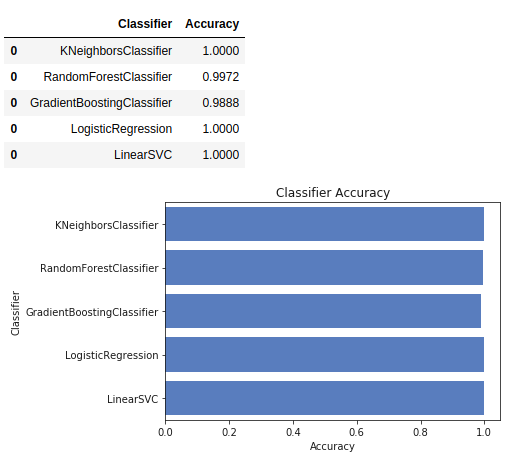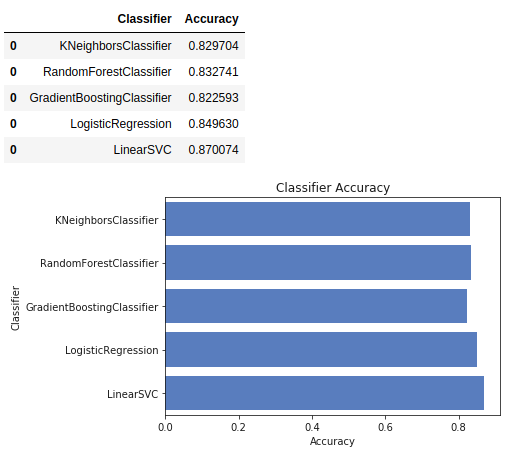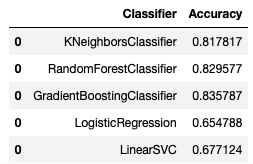This is an implementation of Persistence B-Spline Grids on Matlab and Python3.
To run the code, there are some requirements:
pip install numpy matplotlib scikit-tda tqdm seaborn pandas scikit-learnJupyter is required to run the .ipynb.
The PB_code folder should be uploaded.
An example of toydata is provided. It is a simple synthetic toy data set that contains a circle with its radius 0.4, two concentric circles with their radii 0.2 and 0.4, respectively, two disjoint circles with both their radii 0.2, a cluster of points sampled at random in the normal square, and two clusters of points sampled at random separately in two squares with edge length 0,5. All data are sampled in the range of [−0.5, 0.5]^2 on the 2D plane (shown as follows).
Follow the procedures:
- Run
PD_toydata.ipynbto generate PDs inPD_toydatafolder. - Run Matlab code
main_toydata.mto compute PBs. The results are saved inPB_toydatafolder. - Run
classify_toydata.ipynband obtain the accuracy of classification shown like the following figure.
Because computing PDs takes several hours, the PD dataset was computed in advance, and was saved in PD_dynamic3d folder. If you wanted to test the algorithm directly, you could skip to step3.
Follow the procedures:
- Run
dynamic_3d.mindatafolder to generate original data. - Run
PD_dynamic.ipynbto generate PDs inPD_dynamic3dfolder. - Run Matlab code
main_dynamic3d.mto compute PBs. The results are saved inPB_dynamic3dfolder. - Run
classify_dynamic3d.ipynband obtain the accuracy of classification shown like the following figure.
The dataset of randomly-generated PDs was formed to evaluate the method PB: (1) the classification performance of random PDs with randomly marked label to dispel doubts of over-performance, and (2) performance on two designed randomly generated PD dataset with different distribution and density of long-persistence points to explain which features of PDs PB can capture.
Follow the procedure:
- Run
randomPD_test.min data folder to generate random PDs with different distribution and density. (Randomly-generated PDs in (1) are given in ./data/randomPD folder.) - Run
RandomPD2PB.mto compute PBs. Data is in PB_ClassifyrandomPD folder and PB_rPD_Evaluation folder. - Run
classify_randomPD.ipynbto obtain the classification accuracy in Test (1) and runclassifier_rPD_Evaluation.ipynbto obtain the results of Test (2).
Experiment in Appendix
- original data are in Google Drive. Unzip to
data/PC_train, - Run
PD_pc.ipynbto generate PDs inPD_pcfolder. We provide them in Google Drive. - Run Matlab code
main_pc.mto compute PB of PD. The results are saved inPB_pcfolder. - Run
classify_pc.ipynband see the accuracy of classification.
The randomly-generated PD dataset is in ./data/PD4theorem folder.
- Run
iteration_test.min data folder to generated PBs. - Run
ThmCoefTest.mto generate iteraion-ratio figure.



